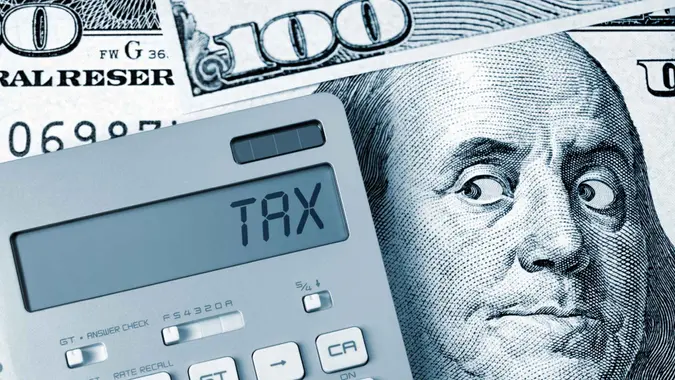New 2024 Tax Brackets May Lead to More Money in Your Paycheck — Here’s How

Commitment to Our Readers
GOBankingRates' editorial team is committed to bringing you unbiased reviews and information. We use data-driven methodologies to evaluate financial products and services - our reviews and ratings are not influenced by advertisers. You can read more about our editorial guidelines and our products and services review methodology.

20 Years
Helping You Live Richer

Reviewed
by Experts

Trusted by
Millions of Readers
As of January, new tax brackets might lead to more money In your wallet, following the IRS’s annual inflation adjustments for tax year 2024, announced in November.
The IRS adjusts its tax brackets every year to avoid so-called “bracket creep,” which happens when inflation pushes taxpayers into a higher income tax bracket without an increase in real income, or reduces the value of credits, deductions and exemptions, as the Tax Foundation explained.
Tax-year 2024 adjustments apply to income tax returns filed in 2025.
As Fox Business reported, the IRS is increasing the tax brackets by 5.4% for both individual and married filers across the different income spectrums.
Standard Deductions for 2024 Tax Year
Standard deductions are also increasing, according to the IRS.
- The standard deduction for married couples filing jointly for tax year 2024 rises to $29,200, an increase of $1,500 from tax year 2023.
- For single taxpayers and married individuals filing separately, the standard deduction rises to $14,600 for 2024, an increase of $750 from 2023
- For heads of households, the standard deduction will be $21,900 for tax year 2024, an increase of $1,100 from the amount for tax year 2023.
Tax Brackets
For tax year 2024, the top tax rate remains 37% for individual single taxpayers with incomes greater than $609,350 ($731,200 for married couples filing jointly).
The other rates are:
- 35% for incomes over $243,725 ($487,450 for married couples filing jointly)
- 32% for incomes over $191,950 ($383,900 for married couples filing jointly)
- 24% for incomes over $100,525 ($201,050 for married couples filing jointly)
- 22% for incomes over $47,150 ($94,300 for married couples filing jointly)
- 12% for incomes over $11,600 ($23,200 for married couples filing jointly)
- 10% for incomes of $11,600 or less ($23,200 or less for married couples filing jointly)
In addition, the IRS increased the threshold for the tax year 2024 maximum Earned Income Tax Credit amount to $7,830 for qualifying taxpayers who have three or more qualifying children, from $7,430 for tax year 2023.
More From GOBankingRates
 Written by
Written by  Edited by
Edited by 


























